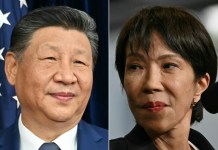India-Nepal border dispute has diplomatically isolated New Delhi in its own backyard. EurAsian Times gets you an analysis of why India-Nepal border dispute deteriorated and has jeopardized strong and healthy cultural, social, linguistic and economic ties between two nations.
Indian Air Force Deploys Su-30 MKI, Apache Helicopters In Forward Bases In Ladakh
Nepal and India have garnered a reputation for being “world’s closest neighbours” and are one of the few Asian nations that share open borders. It is no coincidence that while thousands of Nepal’s Gurkha soldiers serve in the Indian Army, the small nation’s army chief is an honorary general of the Indian Army.
Nowadays, both India and Nepal are embroiled in a bitter border dispute. As EurAsian Times had previously reported, the spat with Nepal picked pace in May when India inaugurated an 80 kilometres long road originating from Ghatiabgarh and terminating at Lipulekh Pass, a disputed region claimed both by India and Nepal.
Post the inauguration, hundreds of youths in different cities of Nepal began demonstrating against the alleged encroachment by India. The Nepal Ministry of Foreign Affairs also objected and a few weeks later Nepal came up with the new map officially including the disputed territories of Lipulekh, Limpiyadhura, Kalapani as Nepali territories.
Birat Anupam, a senior reporter at Nepal’s National News Agency puts forward five factors causing long-lived resentment from Nepalis towards the Indian state establishments.
1. Blockades on Nepal by India
The senior reporter believes that the blockades that India had imposed in Nepal in 1975, 1989 and 2015 have caused mass-infuriation towards the Indian state.
He writes that “Land-locked Nepal is sometimes called “India-locked” because it borders India to the east, west, and south,” while maintaining that New Delhi had taken advantage of its geographical position.
2. Nepal’s Border issues with India
The border between India and Nepal, about 1800 kilometres long stands wide open with no deployment of Nepali or Indian troops. The senior reporter writes that India’s has strong border guards deployed to protect adjacent Indian borders who have been accused of encroaching into Nepali lands.
“There are countless instances where Nepali migrant workers returning from India are extorted by Indian border guards. These incidents also serve to foster anger against India in Nepal,” he writes.
3. India has claimed Buddha’s birthplace
It is globally known that Lord Buddha was born in Lumbini which forms an important part of Nepal not only due to its cultural and spiritual value but also due to its touristic significance.
However, India’s Prime Minister, Narendra Modi, during his address at the 74th session of United Nations General Assembly had rather said that India “ has given the world … Buddha’s message of peace”.
“This was widely criticized on social media platforms in Nepal, increasing anti-India sentiment among Nepalis,” writes Anupam. He also mentions that “some Indian films, books, and public figures say Buddha was born in India, generating strong public protests in Nepal.”
4. India’s Big-Brother Behaviour towards Nepal
Nepal takes pride in being one of the oldest sovereign countries of South Asia even when other South Asian giants like India, Pakistan, Bangladesh were colonised, Nepal was free of the British clutches.
“However, many figures in Indian politics and media habitually call Nepal India’s “young brother.” Nepalis do not endorse the framing of India as Nepal’s “big” or “elder brother,” often used by veteran Indian politicians, intellectuals, and journalists,” emphasises the expert.
He criticises India’s narrative of being the big-brother due to the larger size and quotes Nepal’s Prime Minister K.P. Sharma Oli who stated that “Any country can be big or small in size or population … but nationality cannot be smaller or greater. All countries should get equal opportunity to exercise their sovereignty.”
5. Unequal Diplomatic Agreements
India and Nepal share numerous diplomatic relations that includes several treaties and agreements. However, the reporter believes that the general masses of Nepal see these relations more largely beneficial to India than Nepal.
“For instances, the Gandaki, Koshi and Mahakali water agreements with India are heavily disliked by the majority of Nepalis. These agreements, they say, have given India the upper hand over the use and control of Nepal’s precious water resources,” writes the senior reporter.
Apart from the water agreements, the 1950 Peace and Friendship Treaty is highly unpopular in Nepal. Anupam says “there are strong civilian and independent intellectual voices calling to revise this treaty, which is seen as a formal diplomatic document putting Nepal under the Indian security umbrella,”
Originally Penned By Birat Anupam for Diplomat. Edited by: Vipasha Kaushal




